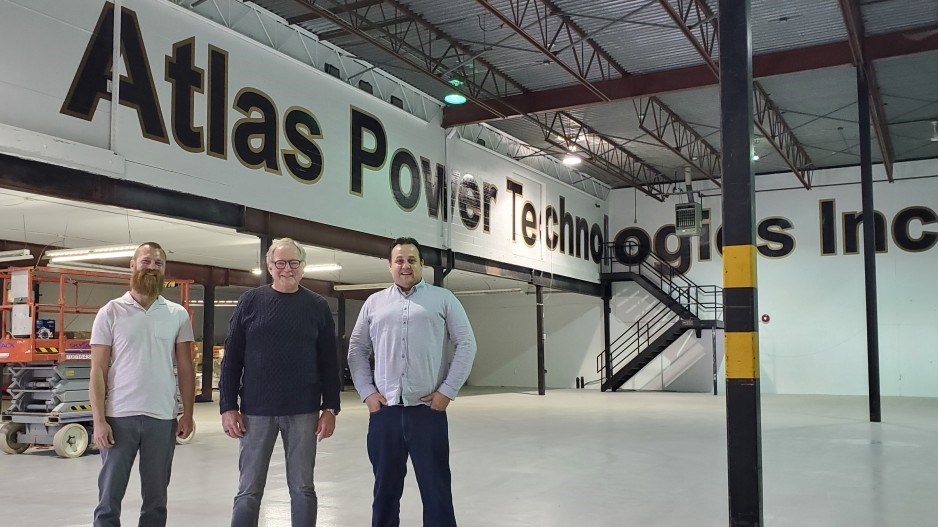In every electronics circuit board you will find capacitors, which are like tiny batteries that help manage the flow of electricity through electronic devices.
Though they can’t store nearly as much electricity as batteries, they do a better job of discharging quickly, and are key to regulating the flow of electricity in electronics.
Supercapacitors can store larger amounts of electricity, and the folks at Atlas Power Technologies believe they could simultaneously solve the energy storage problem of renewable energy while also finding a new use for thermal coal with supercapacitors that use activated carbon made from coal or petroleum coke.
Supercapacitors are electrochemical devices that rapidly charge and discharge energy, and can be used as part of the energy storage and management systems for renewable energy -- wind and solar.
What Atlas Power has done is addressed a cost problem that brings down the cost of supercapacitors.
Currently, the activated carbon used in electrodes for supercapacitors is expensive. Much of the activated carbon currently comes from coconut husks, and can cost $10,000 per tonne, Mitchell Miller, CEO for Atlas Power, told BIV News.
With the help of the Mitacs, Atlas Power is building a new manufacturing plant in Abbotsford that will build supercapacitor cells that may address the cost problem by using cheap, plentiful thermal coal or petroleum coke – a byproduct from oil sands --- as a base for making activated carbon.
Though the price of thermal coal has recently skyrocketed to US180 per tonne, due in part of an energy crisis in Europe and China, it was previously in the US$75 per tonne range, and the projections are for a continued decline in demand, as countires around the world phase out thermal coal power.
Mitacs is a national research organization that helps the private sector find university engineers and scientists with the expertise needed to help solve technical challenges for industry.
With the help of Mitacs, Atlas Power has been working with researchers at the University of BC and Simon Fraser University to try to make one of those “what if” proposals a reality: What if, using an abundant commodity, like coal, or a byproduct of oil sands production, you could make the activated carbon needed to make supercapacitors that could be used in renewable energy storage?
"We spent years developing our own processes to make a very high-grade, highly porous activated carbon with purity enough that it can actually be used in our cells," Miller said.
Atlas is building a new manufacturing plant in Abbotsford, which is expected to be open before the end of this year. Once in production, Miller said the plant will employ 30 to 50 people -- mostly engineers -- and ramp up to about 140.
Mitacs is providing $400,000 in funding and has provided Atlas Power with three interns. UBC Okanagan School of Engineering assistant professor Jian Liu is supervising the UBC team of Mitacs interns.
“We’re involved in many industrial collaborations and they don’t always get this far,” Liu said. “Not only did this project go better than I ever expected, but our partner is now building their manufacturing capability right here in Canada and that’s very important.”
Atlas has private backers helping to finance the new plant in Abbotsford, Miller said.
The role of supercapacitors in large scale storage for renewable energy would be as an adjunct to battery storage to provide greater grid stability -- something that becomes increasingly important as more and more intermittent power gets added to the grid, especially wind power. Supercapacitors can provide the "buffering" needed to stabilize eratic power fluctuations from wind in particular.
Batteries can handle the longer storage needs, while supercapacitors can handle the more immediate storage and distribution, keeping the generation, storage and distribution of electricity more balanced and smooth.
"The really heavy duty, high-power fluctuations the supercapacitors handle, and then the...multi-hour durations is where the batteries would play," Miller said. "The supercapacitor is the workhorse. So any of the large variable demand, the supercapacitor will take it on first. And then the batteries will basically get a regulated power that is much more conditioned.
And in a sense, what Atlas proposes is also a buffer between the traditional use of coal for producing power and newer ways of making power.
"Coal has supported our electrical grid for the last 100 years," Miller said. "That's the consumption rate. That's what we need to replace. So it would make natural sense to use that same material to provide the same benefit that it's currently providing to the electrical grid."




